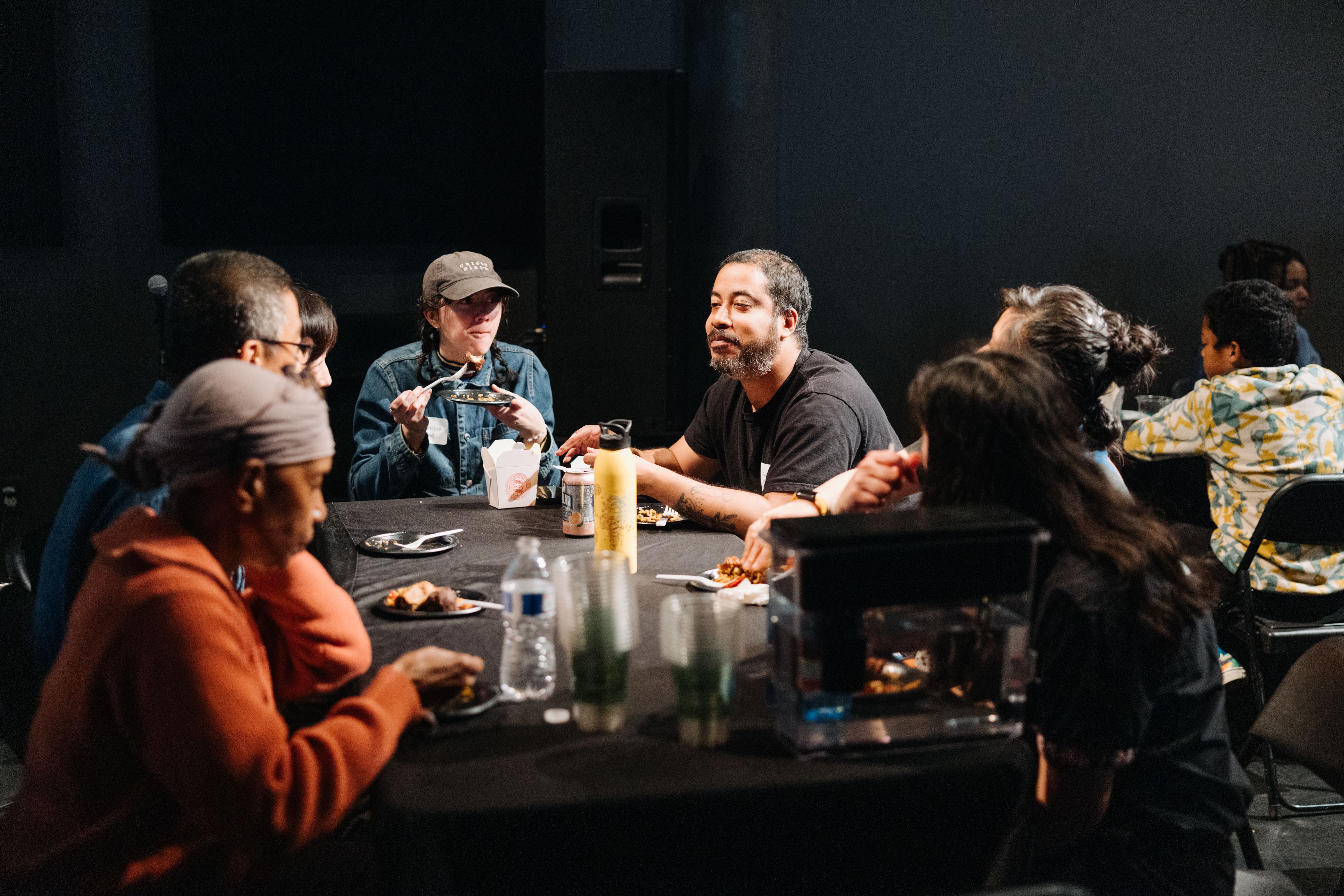Signal Chain: Curation, Community, and SOUND TYPE’s Evolution

SOUND TYPE, the annual music festival at Asian Arts Initiative (AAI), has become one of Philadelphia’s most distinctive listening spaces. Centering music by Asian and diasporic artists, it offers a cross-disciplinary platform that’s as much about community as it is about sound. Now in its second year, Technical Director Devin McKnight—a guitarist, sound engineer, and former touring musician—takes on curatorial duties to deepen AAI’s music programming, continuing the vision shaped by former Executive Director Anne Ishii.
This season’s music programming at AAI has included performances by Sen Morimoto and manas. SOUND TYPE’s remaining lineup features Mars Kumari, Yu Su, Burnt Pink, and Tamio Shiraishi with Bill Nace. For McKnight, curating is about more than the lineup—it’s both a stage and a system, a framework where infrastructure, curation, and collective experience are intertwined. In this interview, he reflects on his path through performance, Berklee, and the sound booth, and how the festival is evolving without losing its signal.
Yuri Seung: Long before you were curating or engineering, when did music start to feel like a bigger part of your life?
Devin McKnight: In high school, I kind of led a double life. I was a three-sport athlete who got decent grades. But I hung out with punks and activists. If I hadn’t had those friends, I don’t think I would’ve realized that being in a band was even an option.
So for you, music also became about activating space and community?
Yeah, you can’t really escape politics in D.C. There were always rallies and protests, and we’d put on fundraisers tied to different causes. People would show up. It felt small, but maybe it could make a difference. We were just kids, you know? But then other kids wanted to get involved too, wanted to engage, be part of it.
Did that sense of space and community shift when you went to Berklee?
I still met people doing all kinds of things. A lot of the teachers came up in the ’70s and had a more open mindset, but as the school’s brand expanded, it started to feel like a big, wealthy private school. One of the best teachers told me, ‘I just play lounge music, man. You’re playing original music—that’s where it’s at.’
Where did you go from there?
I dropped out and toured full-time, but I started burning out. Touring nine months out of the year? That’s too much.
Was that around the time you got into sound engineering?
The sound person from Speedy [Ortiz, the band I played in] brought me into Bowery Ballroom. I started as a stagehand and slowly worked my way up. It was stressful. There can be a real barrier to entry in that world, especially with the kind of guys who act like they own it.
And how did you make the move from New York to Philly and Asian Arts Initiative?
Sadie [Dupuis] put word out. She knew Anne [Ishii, AAI’s former Executive Director]. At first, I was just doing sound, but you know, at nonprofits it’s like, 'Are you busy? Can you do this thing you’ve never done before?' That’s how the curator role came in.
You also helped redesign AAI’s sound setup, right?
When I got here, there wasn’t much of a setup, so I had to build the system. I watched a lot of YouTube tutorials, and Beau [Gordon, Production Manager, Ars Nova Workshop] helped too. I’ve got a system that works for me, and I feel like I can do sound anywhere now.
What’s been your approach to curating this season’s music programming and SOUND TYPE?
Anne and I are different people, and I wanted the shift to feel like a transition, not a reset. I couldn’t just book the Asian artists I knew—I wanted to build on what was already there.
I brought in people like Sen Morimoto, who jumped at the chance to do something in a space like this. And Mars Kumari—she has broad appeal, a weird sensibility, and brings a lot of emotional depth.
What kinds of sounds or scenes do you think are still missing from SOUND TYPE?
No punk. No metal. No hardcore. That’s crazy. That stuff shaped me. Punk is experimental too. We’ve got the drum kit, we’ve got the room—it just needs to happen.
What do you hope people experience when they come to SOUND TYPE?
I want people to feel comfortable. Like at home.I hope they feel like they’ve had a new experience—like if they hadn’t come to this show, they wouldn’t have had that experience with this music in that way.
--
Yuri Seung (she/her) is an interdisciplinary creator who merges nonfiction writing, sound, and visual elements into her practice. Her multisensorial approach often features the body as subject and object. Her work engages themes of constructed identities, extreme forms of expression, shame, and the capacity to heal. She works at the University of Pennsylvania managing experiential learning programs, where she is also a graduate student creating an experimental multimodal autoethnographic project exploring transnational identity.
SOUND TYPE continues July 11 with a performance by Mars Kumari and a conversation with guest writer Alex Smith the next day. More than a music festival, it’s a space for listening more closely, together. Get your tickets here.